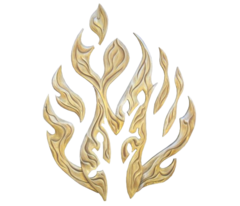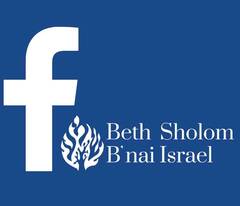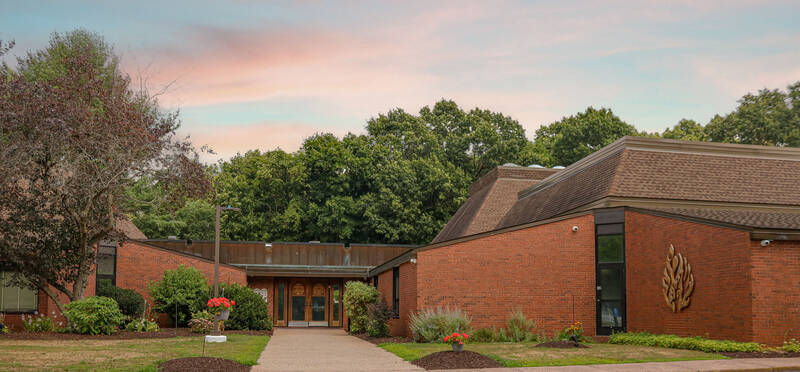Shemini: April 14, 2018
Shabbat Shalom.
In our parsha, the people of Israel are on the cusp of a new way of worshiping God. In the past, the family based religion of their ancestors will give way to a new central sanctuary where hereditary priests will officiate. Perhaps this change takes place as a result of the Golden Calf incident, where the tribe of Levi and the descendants of Aaron remain true to God as the other tribes focus on the golden image that has been made for them. As a reward for their loyalty, the descendants of Aaron will become priests and the Levites will serve as Temple functionaries and guards.
I am sure that it was a bittersweet day for the Israelites. On the one hand, there was the sadness that comes when you realize that it was our sins that have caused us to lose the spiritual privileges that we once had. The “hands on” element of religion, the personal and family touches that make our worship so familiar are now gone. They have been replaced by religious professionals who are not as tuned to our personal and private spiritual needs. On the other hand, it is still good to know that there is a way to stay connected to God, that God will accept our sacrifices and our prayers even if they have to go through the newly ordained priests. In addition the people are informed about the rules of Kashrut, the animals that can and can not be eaten. It is a whole new way to approach religion.
I don’t think that our lives are so much different today than they were long ago. Sure we don’t offer sacrifices and we no longer rely on priests to be intermediaries between us and God. We have become responsible for our own prayer and our own connection with God. But we do have a familiarity with our relationship to God that relies on established connections that we have formed over many years.
This is one reason it is sometimes difficult to change Rabbis in a congregation, because we are used to one approach to prayer that could be very different when a new Rabbi takes over. It is not that we don’t like change, we don’t mind when a visiting Rabbi shows us a different way to organize our service, it is just that we are used to doing things one way and that approach has the advantage of feeling familiar.
The same applies when a Cantor will try to change a familiar tune. We know that there are thousands of tunes that can be used in a service, but we have the ones that are familiar to us, the tunes that have history and memories. We miss our favorite melodies when they give way to contemporary music and musical themes. It is a delicate balance that our Cantor walks when assembling the music for prayer.
And it also applies to our prayer book. Sitting in our seat in the sanctuary we turn to an old familiar friend, our prayer book, to help us put our thoughts and prayers in order. We really don’t need the Rabbi to tell us what page we are on, the book itself seems to know the correct page and opens just to where we need to be. There we can find the comforting words that help us become open to prayer and to the experience of God. We don’t need fancy spiritual procedures in order to pray, we only need the familiar and comfortable prayers that we can easily locate in the siddurim at our seats.
Our Siddur, the one we have used for almost 40 years has been Sim Shalom for Shabbat and Festivals. We Rabbis don’t call it Sim Shalom, we call it “Slim” Shalom, because it was a smaller relative of a larger Siddur that included Shabbat and Weekdays services in one volume. Some of us may be old enough to remember the Siddur that Slim Shalom replaced, The Sabbath and Festival Prayer Book, known also by the name of its editor as the Silverman Siddur. It was published in the 1940’s as the first siddur that was accepted by the entire movement as our siddur of choice. The Silverman Siddur was replaced in the 1980’s because the language of prayer changed, (we no longer prayed “Blessed art Thou …” and because it was published before there was a State of Israel and the Jewish State also changed the way we prayed on Shabbat.
Slim Shalom, was the first movement Siddur to include a more egalitarian approach to prayer. It took out many, but not all, male descriptions of God and it included the Matriarchs in the Amidah. It specifically had sections for Yom Ha’atzmaut, Israel Independence Day and for Yom HaShoah, Holocaust Remembrance Day. It ushered in a new era in prayer where women were included in the liturgy, as well as a time when women would wear a kipah and a tallit. It included a prayer for Israel and for our country, a prayer that was not connected to World War II as it was in the Silverman Siddur. Slim Shalom rapidly became accepted as the standard for our movement.
But now, after another 40 years, the time has come to look at prayer again with new eyes. The language of prayer has become even more egalitarian, so much so that all references to the patriarchs must also address the matriarchs. In our new prayer environment, why should half the congregation, the women, feel uncomfortable and excluded when they pray? Today we must address issues not only of gender but of sexual orientation. We also need to acknowledge the changing nature of spirituality, a way of seeing God less as a being outside of ourselves but as something we can search out inside our souls and inside our bodies. We need now a prayer book that embraces these changes.
But before we can switch to a new Siddur, we have to say goodbye to our old friends. We need to contemplate all that we have experienced holding this siddur in our hands. How it sat in our laps as our children had their Bar or Bat Mitzvah ceremonies. How it was present as we marked birthdays and anniversaries in our sanctuary. We remember dark days in our lives when the words of this siddur helped us find understanding and comfort. On the days of celebration, we turned to its pages to understand the joy of that moment. So take a minute, take hold of this siddur one more time. Gently kiss its cover and then, pass it toward the center aisle so we can collect them. …..
Now we bring in the newest “member” of our community, the siddur Lev Shalem. She is not really that new, her sister is the Machzor that we use on Rosh Hashana and Yom Kippur. Thanks to the generosity of the Filkoff family, and the generosity of many of our members, we are ready to begin to pray from this new Siddur.
Many of the prayers that make up the foundation of our service we will recognize from Machzor Lev Shalem and from Slim Shalom. Jewish prayer is thousands of years old, and much of it always remains the same, even in the presence of a rapidly changing world.
Siddur Lev Shalem not only updates the translations of Hebrew prayer into modern usage, but it also corrects for modern Hebrew usage as well. Modern scholarship has shown us that there have always been many alternatives to prayer and some of those alternative prayers have found their way back into the service. Some prayers, like Anim Zemirot, have slowly become popular again after many years. Shir HaShirim, the Song of Songs, has once again taken its place in the Friday Evening service. Elements of the Sephardic tradition, not widely known in Ashkenazic prayer, are now being included with their own special Sephardic melodies.
Prayer and Sacrifices are closely connected in Jewish Prayer. The Amidah that we recite stands in for an animal sacrifice that was done twice a day. The Musaf service represents an additional sacrifice that was done in honor of Shabbat or a holiday. Almost a century ago, Conservative Judaism changed the liturgy from a text that awaited the return of animal sacrifice to a liturgy that “remembered” how our ancestors used to offer sacrifices as a form of prayer; a practice that we no longer perform nor look forward to restoring. But our movement has also changed and there are elements among our congregations that would like to see all references to animal sacrifice removed from the service. Some of these Jews are vegetarians or others who are concerned with animal welfare. Others see sacrifice as a vestige of a bygone era that no longer speaks to our spiritual needs. But some people understand that there can be a strong connection between the words of traditional prayer and the modern worshipper. To know that our words are connected to what our ancestors have recited for two thousand years is a great connection that perhaps, should not be severed by modern sensibilities. Lev Shalem therefore includes alternative passages to meet the needs of different people who take different stands when it comes to prayer.
As we look through the pages, we note that there are additions of poetry and explanations of the text on most pages. These are there to help us understand the words that we pray. It is not enough to read along with the Shaliach Tzibur who leads the service, but we should have the time and ability to reflect on the meaning behind and underneath the words. The notes in the margins can help us have a deeper relationship with the words that we pray.
A modern Siddur must understand the relationship in prayer between the Hebrew language and those who wish to pray with little or no familiarity with the Hebrew text. Hebrew is the language of Jewish prayer. Hebrew is constructed as a language that understands the spiritual nuances that Judaism tries to teach us. A translation of the text, a text that is mostly poetry, will lose a lot as we try to translate the intricate lessons that the Hebrew original contains. Lev Shalem contains many new transliterations that will help everyone participate more easily in the service.
Let us welcome to our congregation our new siddur Lev Shalem. Let us give the cover a welcoming kiss as we open its pages for the first time in prayer. Our hope is that, like past generations, we will celebrate the important times and people in our lives by dedicating these volumes in the weeks ahead. We have sent everyone forms to dedicate Siddurim in honor or in memory of friends and family. Please continue to send in your dedications so we can personalize every volume in our sanctuary. For today, however, let us explore Lev Shalem’s pages as we move forward together in prayer. Let us lift our voices in prayer as we begin this new era in our congregation, in our community and in our liturgy as we say … Amen
Please turn to page 184 and rise as we recite the Hatzi Kaddish before the Musaf service.
Sermon given by Rabbi Randall Konigsburg at Beth Sholom B’nai Israel on Saturday, April 14, 2018.




